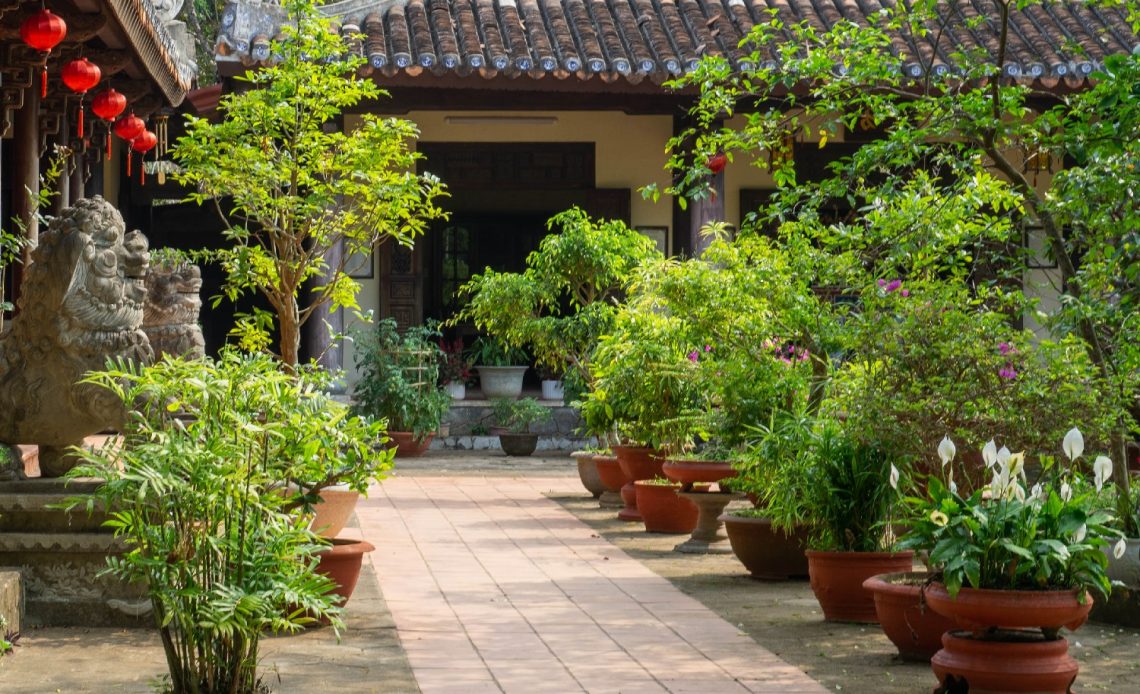

We’re here to help! Wild Yards is a completely free website that is 100% dedicated to helping you create a wildlife-friendly, sustainable yard. Read more
WildYards is reader-supported. When you buy a product through a link on our site, we may earn a comission. Every product is independently selected by our (obsessive) editors and our reviews are unbiased and objective. Read more about our mission or our privacy policy.
If you’re an avid gardener with only a small patio or backyard to grow in, you may be wondering what your options are. With less room to play with, you’ve got to make the most of the space that you have. Many plants are suitable for container gardens, including herbs like cilantro and flowers like rio dipladenias. But if you’d rather grow a tree, you’ll be happy to hear that there are a variety of dwarf trees for pots to choose from.
Flowering dwarf trees, like ‘Cinderella’ Crabapples, ‘Bloomerang’ Lilacs, and ‘Limelight’ Hydrangea trees, draw countless pollinators to your outdoor space. ‘Meyer’ Lemon and ‘Pixie” Mandarin fruit trees can transform even the smallest patio into a home orchard. And Japanese Maple and Sweet Bay Laurel dwarf varieties add interest with their eye-catching foliage.
10 Best Dwarf Trees for Growing in Pots
Trees are more versatile than you might think! Whether you want to grow a handful of small trees in pots on your sunny patio or create your own Japanese-style garden, there’s a tree to suit your needs. If you’re working with limited garden space, here are 10 fantastic dwarf trees that grow great in pots.
‘Cinderella’ Crabapple (zones 4 through 8)
Crabapple trees are medium-sized in general, but if you want to grow a Crabapple tree in a pot, look for the ‘Cinderella’ variety, which only reaches heights of about 8 feet. Like all Crabapple trees, this dwarf variety requires full sun, so you’ll need to place it where it can get at least 6 hours of light every day. And be sure to grow your dwarf Crabapple in nutrient-rich slightly acidic soil that drains well.
Dwarf Crabapples produce large clusters of white, red, and pink flowers in the spring. These fragrant blooms attract all sorts of wildlife, including bees, butterflies, and hummingbirds. Growing two Dwarf Crabapple trees will allow the plants to reproduce, resulting in golden yellow fruits that birds like to snack on. All in all, the Ornamental Crabapple ‘Cinderella’ offers gardeners with limited space a lot of bang for their buck.
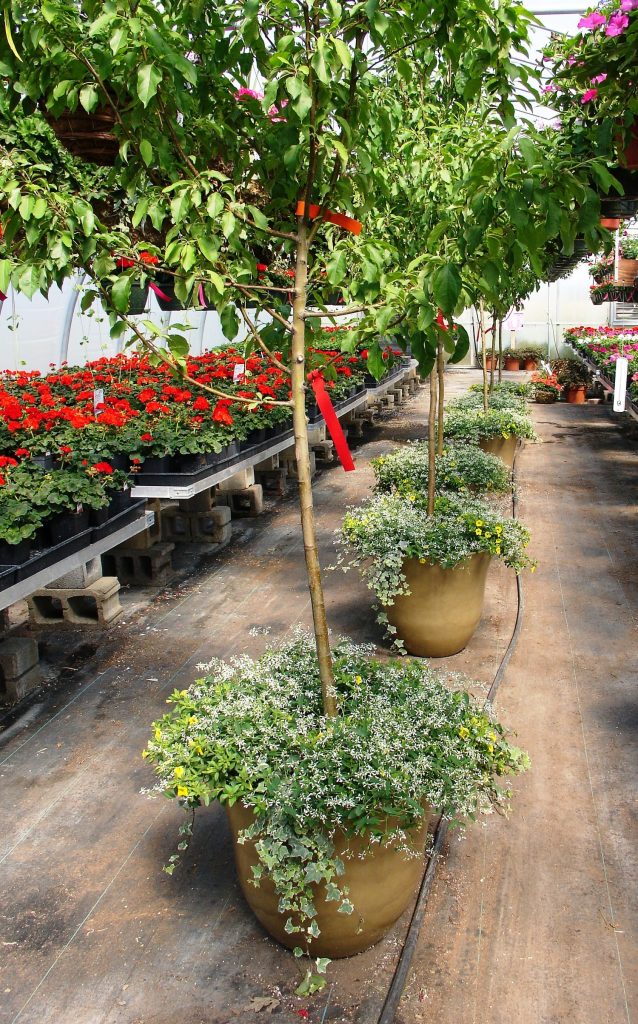
Dwarf Meyer Lemon (zones 8 through 11)
If your patio has a mixture of sun and shade, consider growing a Dwarf Meyer Lemon tree. The Dwarf Meyer Lemon grows at a moderate rate and, when pruned, it can reach heights of 8 feet tall. This tree prefers rich, sandy loam soil that drains well. Because these miniature fruit trees are self-fertile, they will still produce lemons for you to enjoy even if you only have room for one.
Dwarf Meyer Lemon trees produce fruit year-round. Like most dwarf fruit trees, it produces far more fruit than non-dwarf varieties. And because this hybrid plant has been crossed with orange plants, their fruit is sour, yet sweet — unlike regular lemons, which can be so tart that they make your eyes water. Bees, butterflies, and other pollinating insects will love visiting your Dwarf Lemon trees when they’re in bloom, and you’ll love turning their delicious fruits into drinks, pies, and other sweet treats.
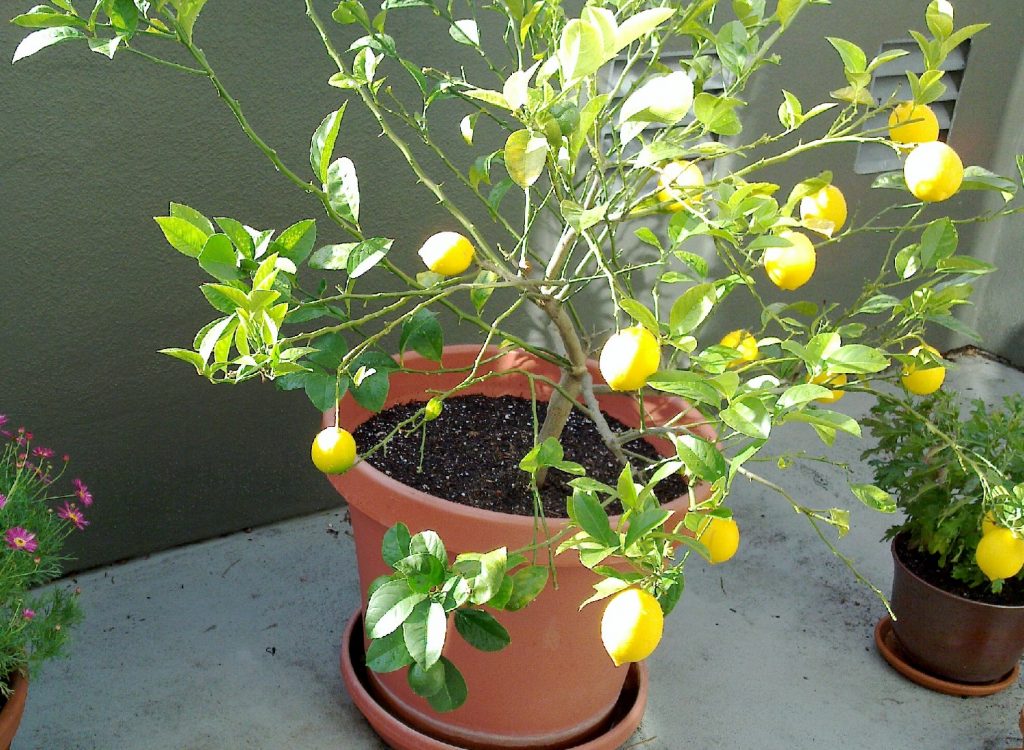
Japanese Maple (zones 5 through 8)
Grown indoors, Japanese Maple trees can be kept in almost any region in the nation. This exotic tree produces vibrant red foliage draped gracefully from slender branches. Over time, the trunks can get quite large and they’re covered in a deep brown bark that accents the tree’s scarlet foliage nicely.
When planted in the ground, the Japanese Maple can grow to be 35 feet tall. But when kept in pots, they can be trimmed back to a more manageable height of 8 feet. The good thing about Japanese Maple trees is that they can tolerate all light conditions, from full sun to full shade. Just ensure you grow your Japanese Maple in nutrient-rich acidic soil that drains well, and it will do just fine.
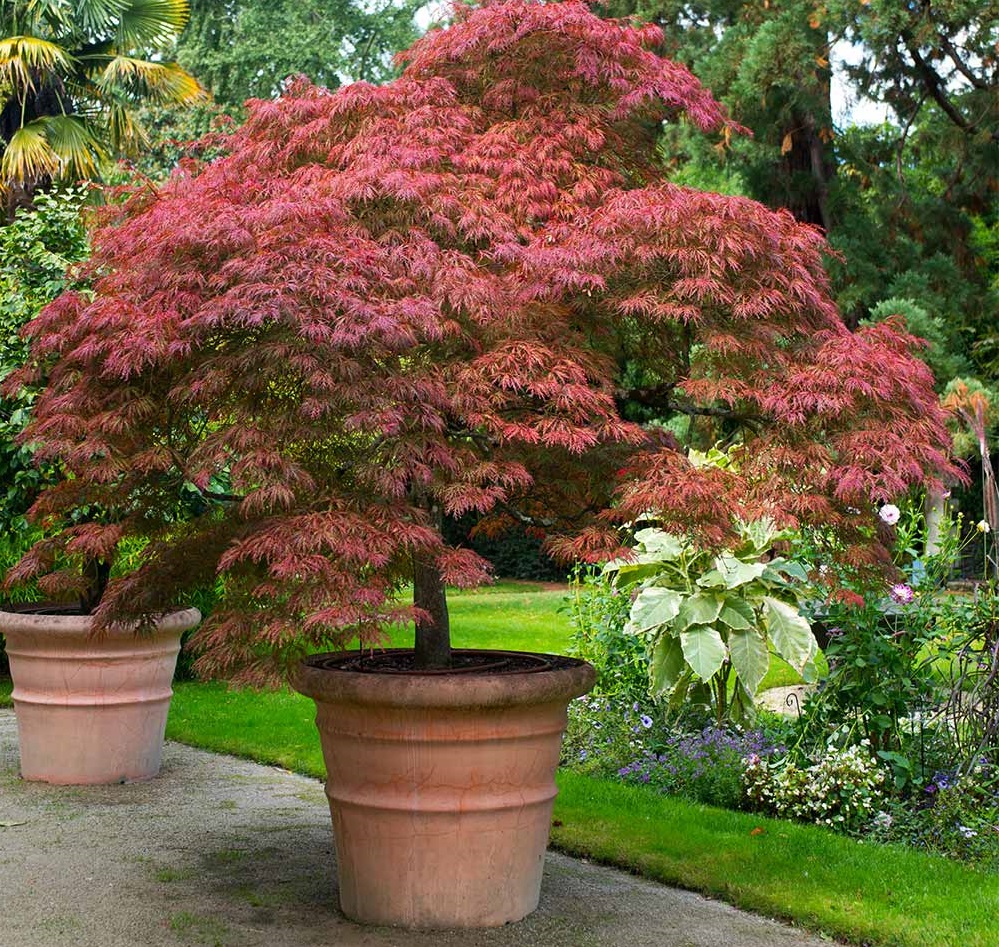
‘Bloomerang’ Lilac (zones 3 through 7)
Fragrant and colorful, the ‘Bloomerang’ Lilac tree maxes out at about 7 feet. These are decorative trees. When trimmed regularly, they develop a lollipop shape, with beautiful globes of flowers and foliage situated at the tips of slender trunks. These fast-growing trees prefer full sun, and even though they’re fairly drought-tolerant once established, they appreciate weekly waterings.
Hummingbirds, bees, and butterflies, go crazy for this plant’s deliciously-scented perfume and sweet-tasting nectar. Be sure to grow your ‘Bloomerang’ Lilac tree in well-draining soil, preferably in pots with drainage holes in the bottom, to ensure optimum performance.
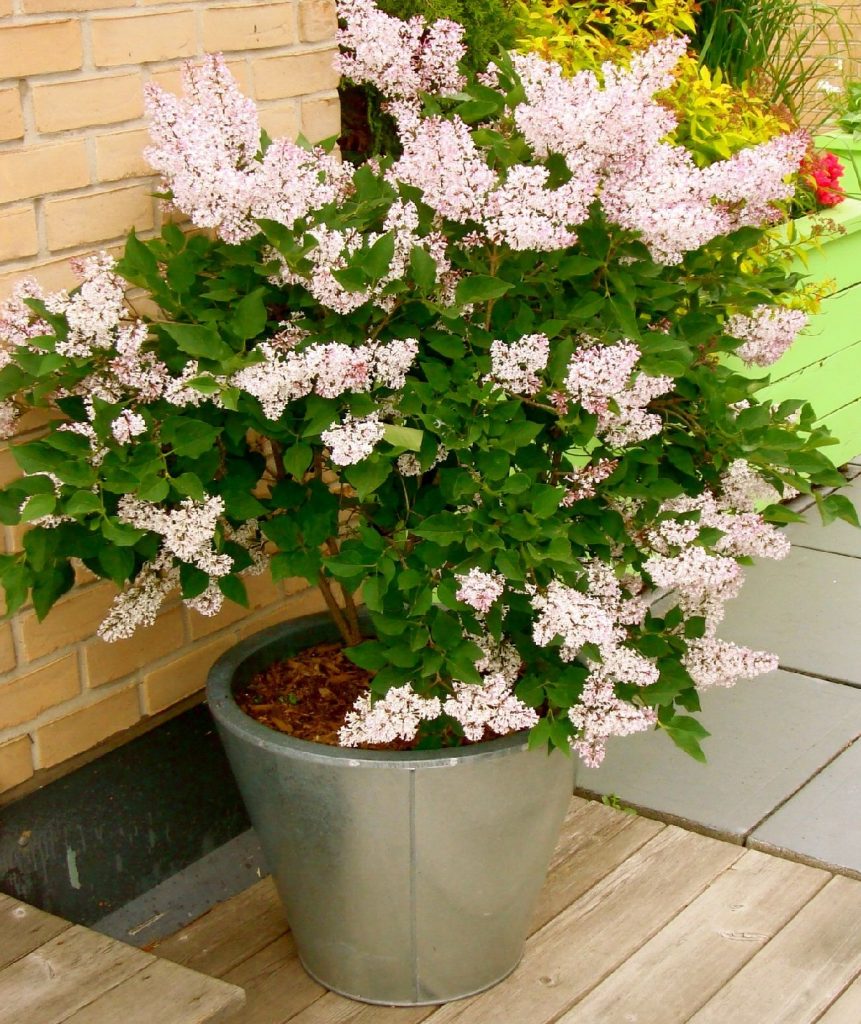
‘Little Ollie’ Dwarf Olive Tree (zones 7 through 9)
At first glance, the ‘Little Ollie’ Dwarf Olive tree looks a lot like rosemary. Especially before it has reached its maximum height of 6 feet. This tree’s short, needle-like leaves and grayed green color trick you into thinking it’s an herb. But as this plant grows, it takes on a conical shape, especially when trimmed regularly, giving it an air of dignity and refinement.
‘Little Ollie’ is so easy to care for. This dwarf tree is incredibly drought-resistant, requiring only weekly waterings. Plant this tree in sandy soil that drains well and keep it where it can get full sun. Even though it’s a bit slow-growing, this small olive tree is a fantastic way to class up your outdoor space.
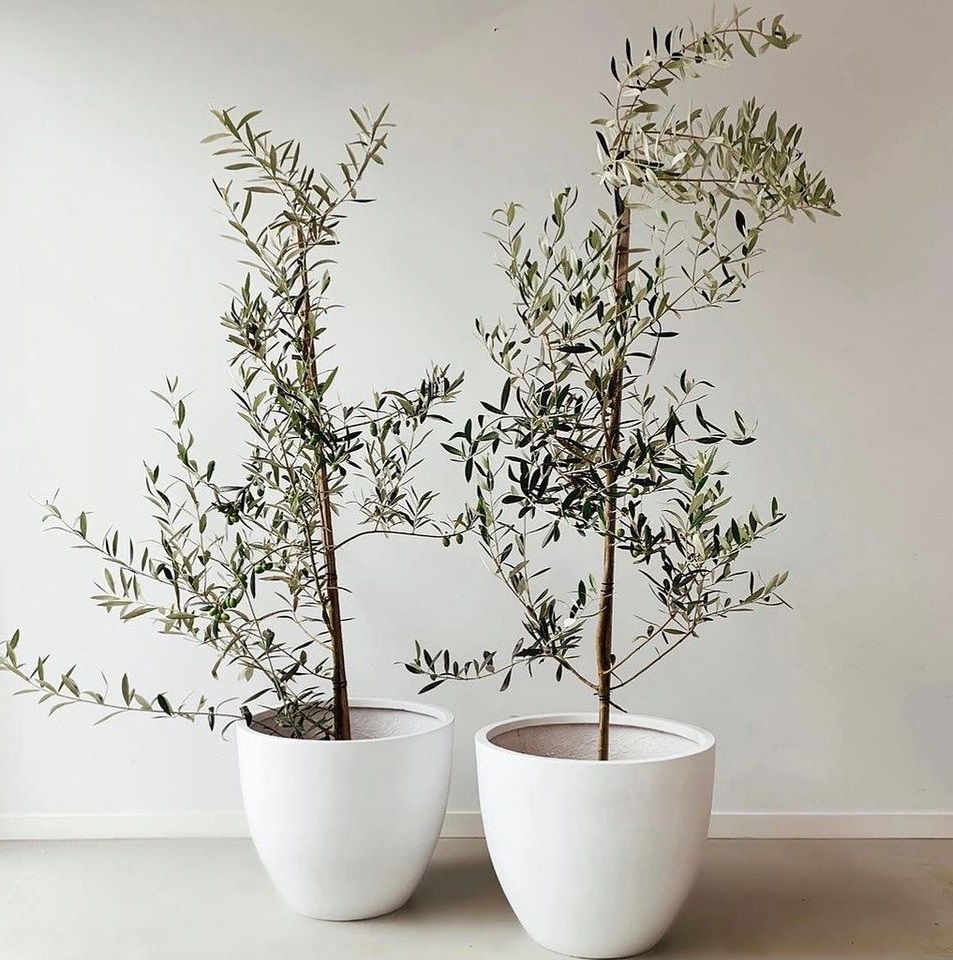
‘Pixie’ Mandarin (zones 4 through 11)
The ‘Pixie’ Mandarin tree is, quite frankly, adorable. It grows up to 8 feet tall, takes on a nice rounded shape when manicured, and has an attractive trunk to foliage ratio. The fruits themselves are fairly small, you could fit several in your hand at once. And they have a pleasant mild taste that isn’t sickeningly sweet.
‘Pixie’ Mandarin trees grow well in full to partial sunlight when planted in well-drained soil. Regular waterings are key to fruit production, as these self-pollinating, self-fertile citrus plants cannot produce properly without adequate moisture. This mini tree blooms in summer, when it attracts the attention of dozens of hungry local pollinators.
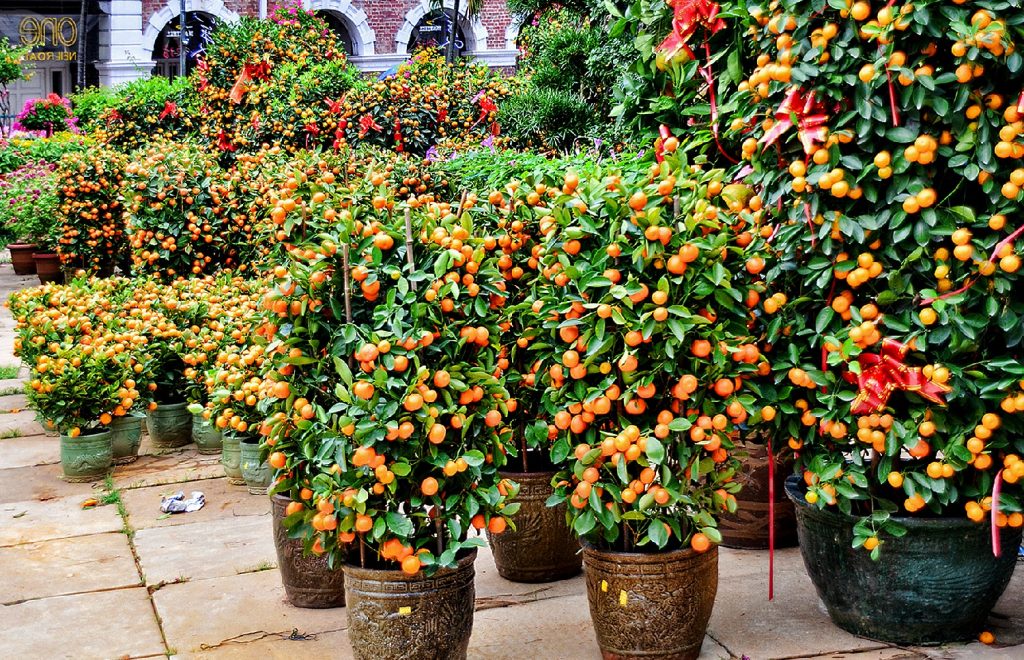
Sweet Bay Laurel (zones 4 through 11)
The small Sweet Bay Laurel tree can reach 15 feet tall and provides your small outdoor space with year-round color. Its smooth, oval, dark green leaves make this attractive shrub a showstopping focal point for any patio. You can harvest the bay leaves to be used in soups, pasta dishes, and other savory recipes.
The Sweet Bay Laurel grows best in full to partial sunlight and should be planted in acidic to alkaline soil that’s rich in organic matter. The soil absolutely must drain well, as Sweet Bay Laurel does not like sitting in soggy, muddy ground. In the summer months, enjoy the rush of songbirds who will visit your Sweet Bay Laurel tree to forage on the tiny black fruits it produces.
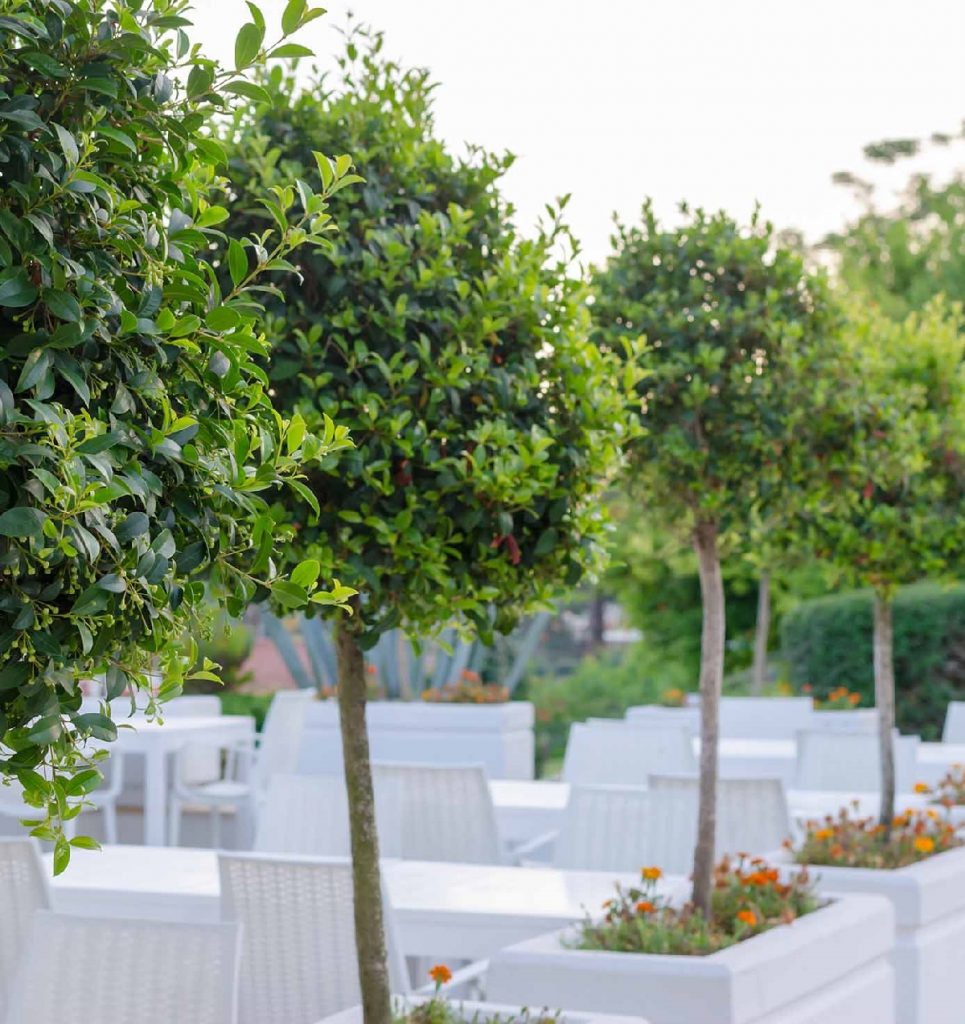
Dwarf Mugo Pine (zones 2 through 8)
Even if your outdoor space is small, you can still give it that “deep in the woods” vibe with a Dwarf Mugo Pine. This gorgeous evergreen tree produces medium-size needles on relatively short branches, giving the foliage a distinctive bottlebrush shape. Dwarf Mugo Pines are slow-growing, and only reach about 5 feet tall. This plant can be trimmed back to give it a defined shape, but when left to its own devices, it can spread out around 10 feet.
Like most Pine trees, Dwarf Mugo Pines are tolerant of dry, arid climates as well as humid environments. This tree requires at least 6 hours of sunlight every day, and it thrives in almost every soil type, except for compacted, heavy clays.
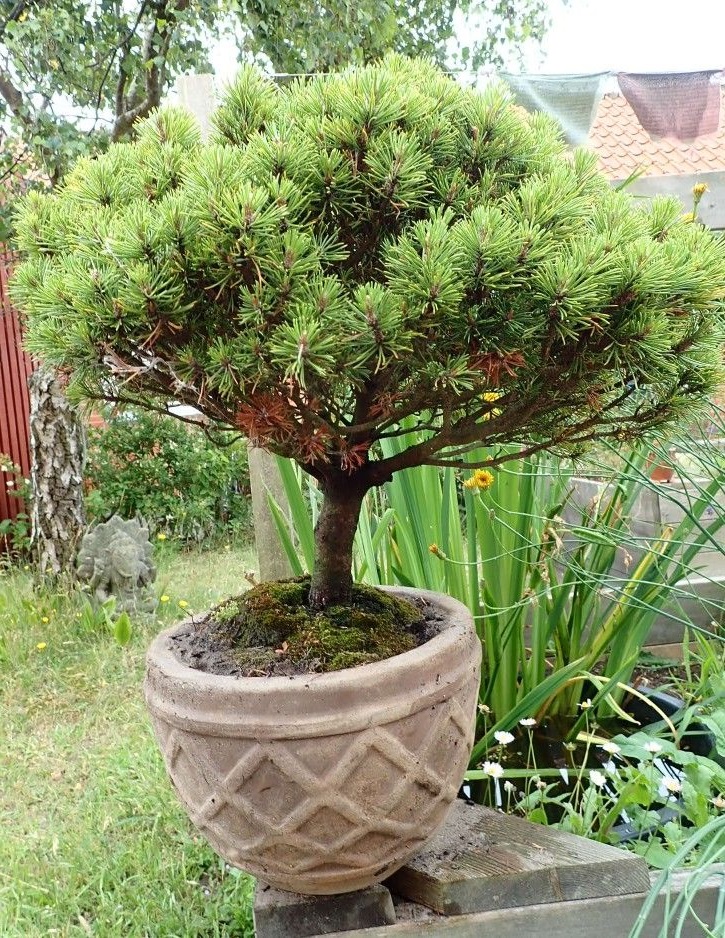
‘Limelight’ Hydrangea Tree (zones 3 through 8)
From spring to midsummer, the ‘Limelight’ Hydrangea tree produces large pale lime green to white blooms that attract numerous pollinators, particularly butterflies, bees, and wasps. This plant is very cold tolerant, so it can be planted in full sun in cooler climates. In warmer regions, it’s best to keep this plant in partial shade.
‘Limelight’ Hydrangea Trees look gorgeous grown on opposite sides of an exterior doorway, but solitary plants make a beautiful focal point, too. Grow these compact trees in rich, well-drained soil, and be sure to give them a slow-release 10-10-10 fertilizer every spring to enhance performance.
‘Mariken’ Ginkgo Biloba Tree (zones 3 through 8)
This tiny tree only reaches 3 feet tall, but it can grow up to 8 feet wide when left untrimmed. The ‘Mariken’ Ginkgo Biloba tree produces dense foliage. This tree’s iconic fan-shaped leaves are so packed together that you can barely see any airspace between the branches. Enjoy the ‘Mariken’s deep green foliage during the spring and summer months before the leaves turn a fantastic shade of yellow in the fall.
A slow-grower, the ‘Mariken’ requires full sun to stay healthy. However, it isn’t too picky about its soil. You can grow this hardy dwarf tree in soils that contain a lot of clay, and they’ll still keep plugging along. Pest and disease resistant, this plant requires very little attention once established, although it needs to be watered regularly.
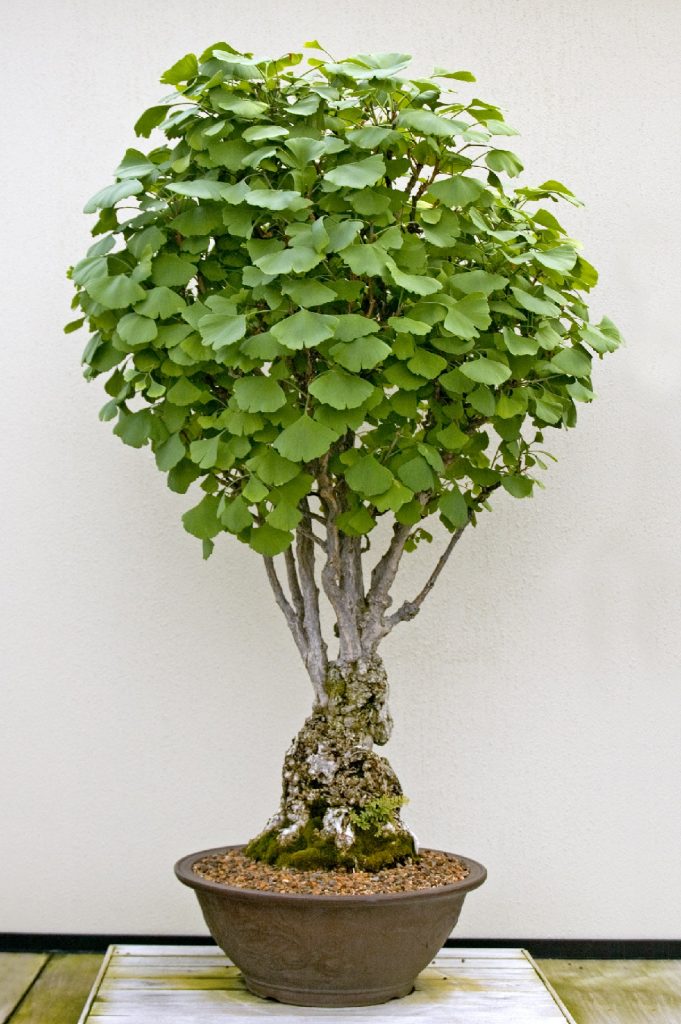
A few tips for growing dwarf trees in pots
Growing dwarf trees in pots is a great way to save on space. Just be sure to care for them per their label’s specifications. And don’t forget to prune them. Certain trees, like the Dwarf Mugo Pine, may be fine without annual trimming. But ‘Limelight’ Hydrangea Trees and ‘Bloomerang’ Lilac Trees rely on regular pruning to stay healthy, so don’t skip this crucial step.
By choosing the right dwarf trees for your region, and taking the time to fulfill their specific care requirements, you can finally grow trees in your tiny outdoor space.

Dwarf Meyer Lemon in zone 4?
That’s a typo.
Hi GT,
Thank you for pointing that out! The typo has been corrected.